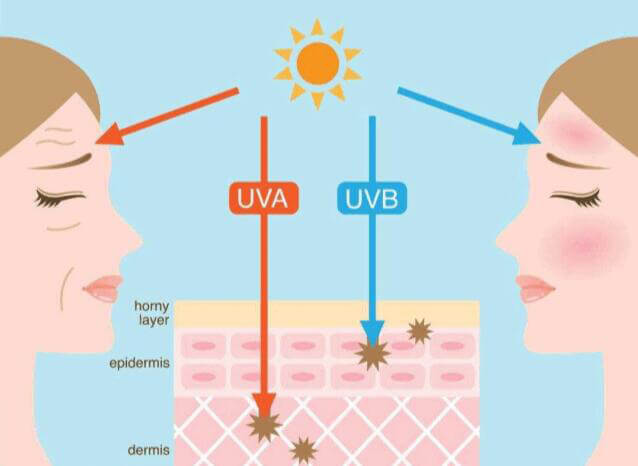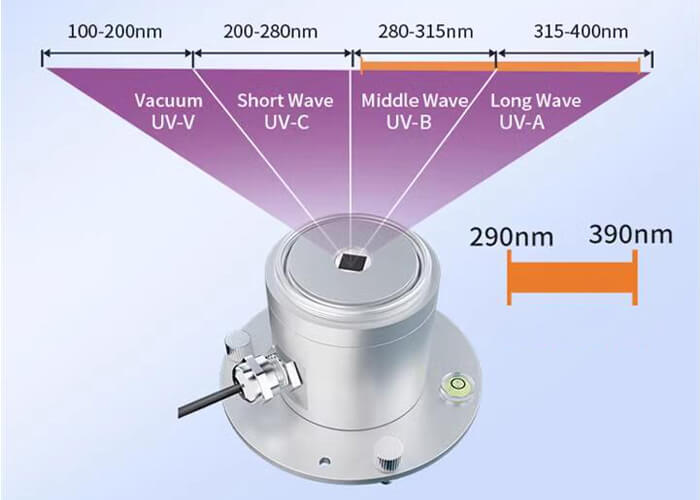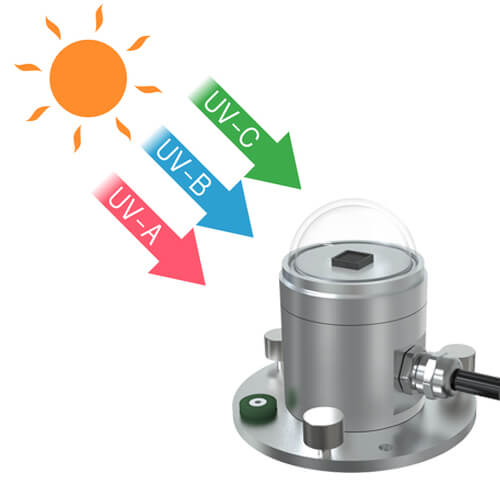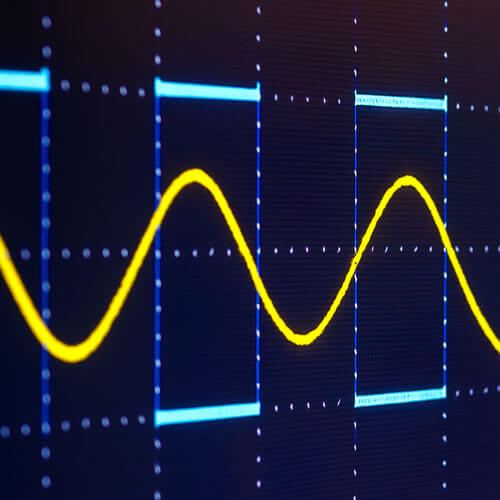It is widely known that ultraviolet (UV) radiation is prevalent in the natural environment, primarily originating from solar. While most UV radiation is absorbed by the Earth’s atmosphere and the ozone layer, a portion of it reaches the Earth’s surface. Moderate exposure to UV radiation is beneficial for both human health and ecosystems, but excessive UV exposure can be harmful. Although the human eyes cannot perceive the presence of UV radiation, UV sensor can be employed to monitor its intensity, providing valuable information to assess the potential risks associated with UV exposure.

What is a uv sensor?
A UV (Ultraviolet) sensor is a detector capable of sensing the intensity of ultraviolet radiation. It can measure both the intensity and wavelength of UV radiation, serving the purpose of detecting and monitoring the levels of ultraviolet radiation in the environment.
How does a uv sensor work?
The working principle of a UV sensor is based on the radiation of ultraviolet light. When ultraviolet light irradiates the surface of the sensor, photons will excite electrons, and these electrons will be measured by the sensor. There are two types of UV sensors:
- Photodiode UV Sensor: It operates by measuring the strength of the current generated when ultraviolet light is incident on the photodiode, determining the intensity of UV radiation.
- Photocell UV Sensor: It operates by measuring the change in resistance caused by ultraviolet light incident on the sensor’s surface, determining the intensity of UV radiation.
The measurement principle of a UV (Ultraviolet) sensor is based on the radiation characteristics of ultraviolet light. Ultraviolet light has a wavelength range of 100 to 400 nm and is a highly penetrating, high-energy electromagnetic wave. UV radiation has a significant impact on human health, and prolonged exposure to UV radiation can lead to diseases such as skin cancer and sunspots. Therefore, UV sensors find wide applications in environmental monitoring, UV radiation dose measurement, UV sterilization, and other fields.
Three types of uv sensor
Ultraviolet (UV) is a collective term encompassing radiation across the entire UV wavelength spectrum. Depending on different wavelength ranges, UV can be further divided into three distinct types: UVA (Long-wave Ultraviolet), UVB (Medium-wave Ultraviolet), and UVC (Short-wave Ultraviolet). Accordingly, sensors used to measure UV intensity are primarily categorized into three types.

UVA Sensor
Wavelength Range: UVA sensors are designed to detect ultraviolet radiation within the wavelength range of 320 to 400 nanometers.
Applications: Primarily used for measuring UVA radiation in sunlight, as this wavelength range of UV has relatively minor effects on the skin and eyes.
Fields: Applied in environmental monitoring, smart home devices, UV protection products, and more.
UVB Sensor
Wavelength Range: UVB sensors are specifically designed to detect UVB radiation within the wavelength range of 280 to 320 nanometers.
Applications: UVB radiation has a significant impact on the skin, so these sensors are commonly used to measure UVB radiation in sunlight to assess the level of UV danger.
Fields: Utilized in medical devices, smart sunscreen products, UV indicators, and more.
UVC Sensor
Wavelength Range: UVC sensors are designed to detect UVC radiation within the wavelength range of 100 to 280 nanometers.
Applications: UVC radiation has germicidal properties, making these sensors commonly used in UV disinfection devices to ensure proper UV exposure.
Fields: Employed in medical devices, water treatment equipment, air purification devices, and more.
How to install the UV sensor?
Choosing a Location
Choose an open and unobstructed location for UV sensor placement at the measurement site to ensure the sensor can receive radiation from UV sources. Additionally, ensure that the UV sensor remains unshaded throughout the day, as it needs to measure radiation from various directions. This is crucial for accurately measuring the UV levels in the specified area.
Determine the installation height
Depending on the design of the UV sensor, some meteorological UV sensors require installation at specific heights to ensure the accuracy of measurement results. Additionally, certain UV sensors are susceptible to environmental influences, such as buildings and vegetation. Installing them at specific heights can minimize the impact of environmental factors on measurement results.
Connect the cables
Connect the power and signal lines of the UV sensor according to the manual, securing them to prevent looseness or poor contact. Minimize cable crossovers to avoid electromagnetic interference. If the sensor is installed in a humid environment, ensure proper moisture protection for the cables.
Test calibration
After installation, conduct testing and calibration following the product manual. Regularly calibrate the sensor as per the manufacturer’s recommendations. In case of any issues, promptly contact technical support.
What are uv sensors used for?
1. Medical treatment
Scientists have discovered that UV radiation with a wavelength around 310nm has a strong effect on skin pigmentation, accelerating skin metabolism and promoting skin growth. This can be effective in treating photodermatoses such as vitiligo, polymorphous light eruption, chronic eczema, and light-sensitive itching rash. Therefore, in the medical field, UV therapy is increasingly utilized. When using this therapy, it’s crucial to monitor the intensity of UV radiation, necessitating the use of UV sensors for monitoring.
2. Flame detection
The UV flame detector detects fires by sensing ultraviolet radiation generated during the combustion of substances. In addition to UV flame detectors, there are also infrared flame detectors available in the market. UV flame detectors are suitable for locations where open flames are likely to occur during a fire. They can be used in places with strong flame radiation during a fire or in locations with no smoldering phase. UV flame detectors with UV radiation sensors require the sensor itself to be high-temperature resistant and highly sensitive.
3. Arc detection
High-voltage equipment can experience arc discharges due to insulation defects, accompanied by a significant amount of light radiation, including rich ultraviolet (UV) light. By detecting the UV radiation generated during arc discharges, the safety status of high-voltage electrical equipment can be assessed. UV imaging is an effective method for detecting arc discharges and has excellent detection and localization capabilities. However, UV signals are relatively weak, posing some challenges in the detection process.
4. Banknote recognition
Ultraviolet (UV) recognition technology primarily utilizes UV sensors to detect the fluorescent marks and anti-counterfeiting features on banknotes, as well as the dullness reaction of banknotes. This type of recognition technology can identify most counterfeit bills (such as washed, bleached, or pasted bills). It is employed not only in ATM deposit recognition but also in financial equipment like currency counters and counterfeit detectors. Typically, fluorescence and UV light are used for comprehensive detection of banknotes. The authenticity of banknotes is determined by distinguishing their different absorption and reflection rates of UV light compared to other paper.











